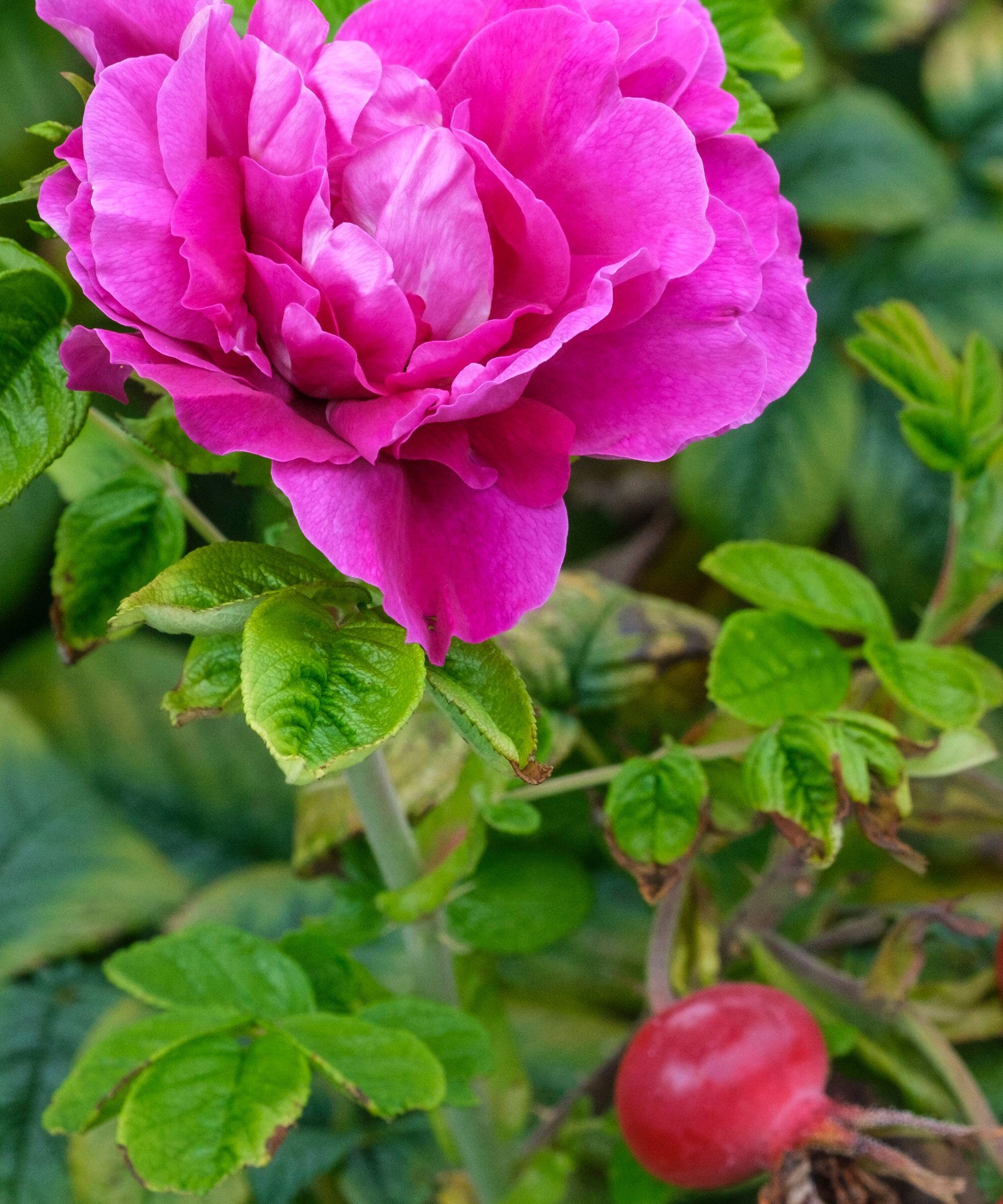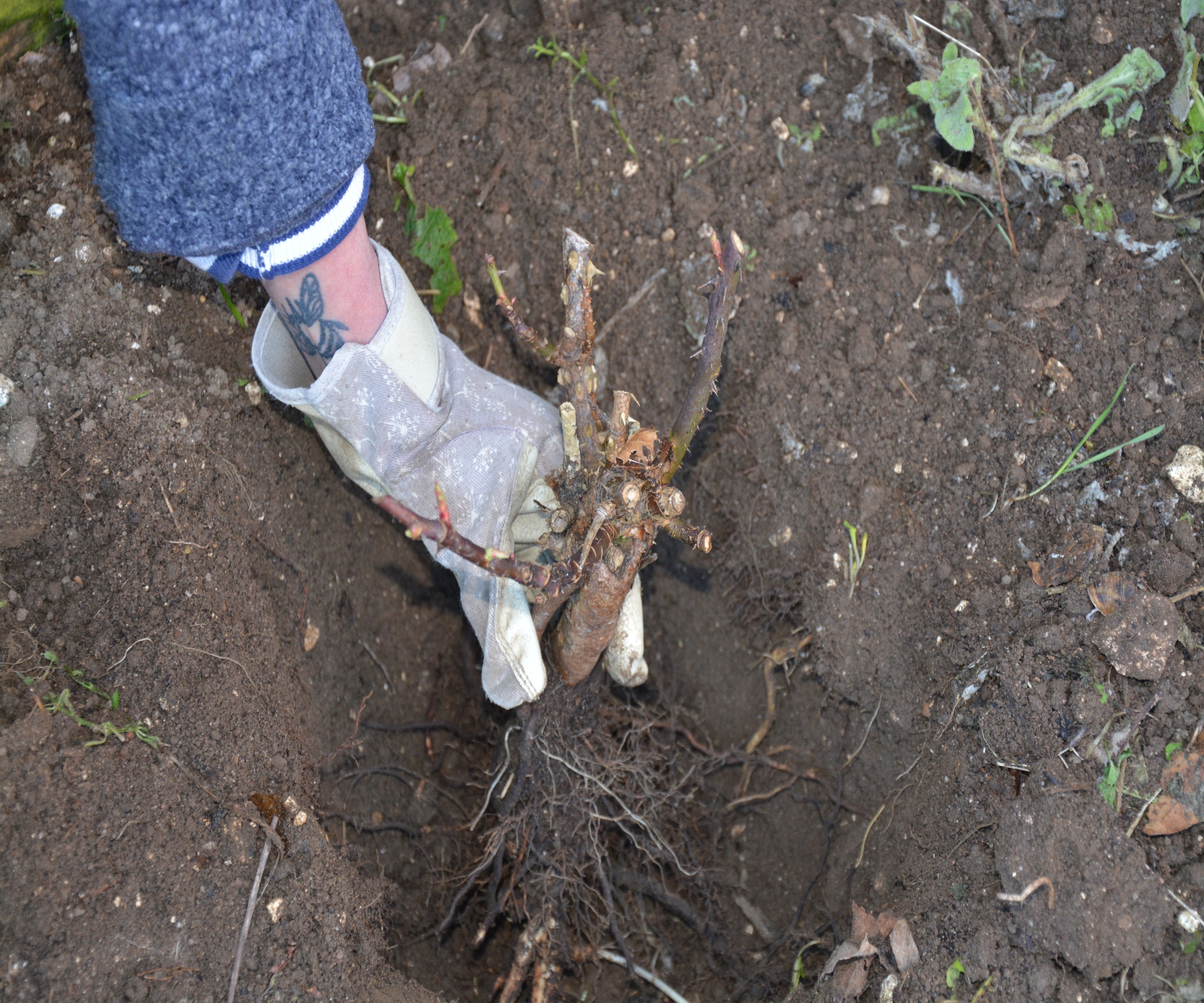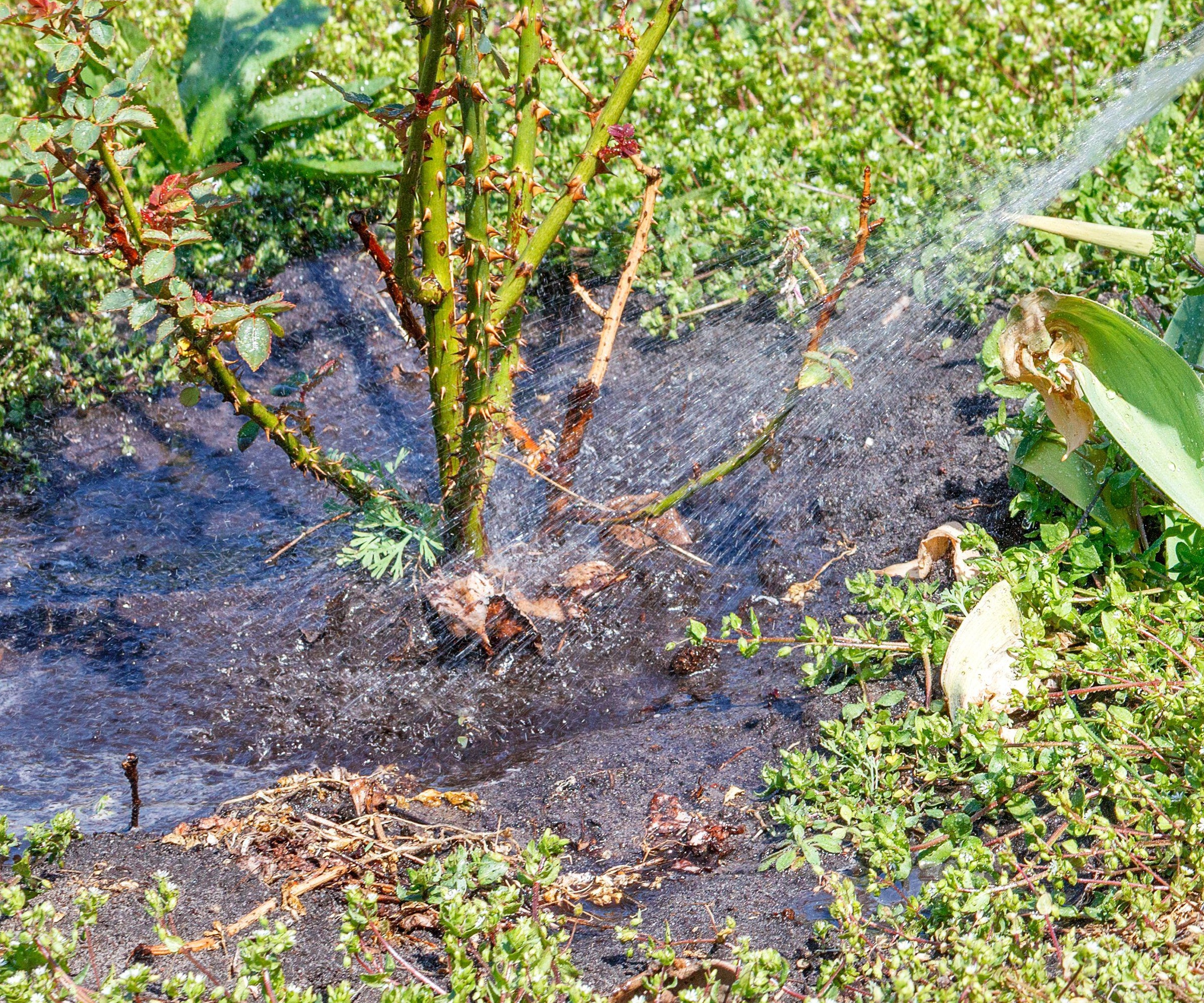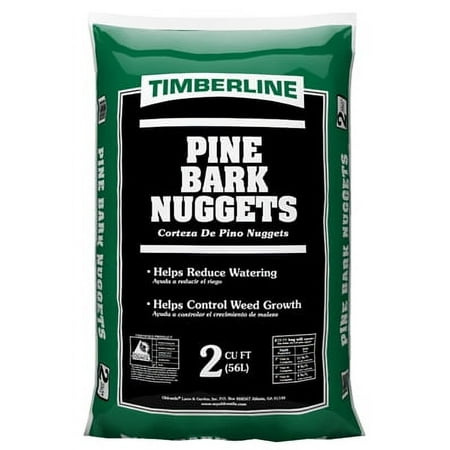Are roses drought tolerant? Expert advice for growing roses in dry yards
Growing healthy, flower-filled roses is possible even in arid landscapes


Roses have the reputation of being backyard primadonnas, hard to grow and magnets for a wide range of pests and diseases.
But this isn’t a fair assessment - after all if they are so tricky, would gardeners have bothered growing them so successfully for centuries?
In fact, they are remarkably tough plants and with the right care, you can grow roses in many environments, even those with minimal rainfall. Here, I share the best rose varieties to try growing in dry yards and reveal tips to get the most out of your blooms in arid conditions.

Roses may be the belles of the garden ball, but they are robust plants that can grow in harsh conditions
Are roses drought tolerant?
Not all varieties of roses are suited to arid conditions, and if you live in a hot, dry climate - such as US hardiness zone 10 - where there is little rain, certain species should be avoided.
For example, Hybrid Tea roses are more delicate, less hardy roses, often with long slender stems that make them popular with flower arrangers. These roses don’t have the drought tolerance needed for dry climates. They will need a lot of work, care and watering and even then they may not thrive. Do not fear, however, there are other options better suited to dry yards.
Best drought tolerant roses to grow
1. Iceberg

The beautiful white flowers of the drought-tolerant 'Iceberg' rose
‘Iceberg’ is a versatile floribunda with a light, sweet scent. It can be trained as a mid-sized shrub or a climbing rose that grows up to 12ft tall. It usually produces white flowers, but there are also pink and burgundy varieties.
'Iceberg' is available to order online from Walmart, and this variety will easily handle dry weather.
Design expertise in your inbox – from inspiring decorating ideas and beautiful celebrity homes to practical gardening advice and shopping round-ups.
2. Hansa

'Hansa' is a Rose rugosa that produces attractive hips int he fall
‘Hansa’ is a type of wild rose, Rosa rugosa, with large, double, magenta blooms in summer and striking rose hips in the fall and winter. A robust plant, it can withstand both harsh summer heat and freezing winter conditions.
Rosa rugosa plants are available to order online from Walmart.
3. Arctic Blue

'Arctic Blue' has unusual lilac/purple blooms with bright gold centres
‘Arctic Blue’ is a shrub rose that produces unusual double-petalled flowers in shades of purple and lilac. It has a citrus scent and is more than able to withstand heat and drought.
'Arctic Blue' is available to order online from Walmart.
4. Lemon Fizz

What Rosa 'Lemon Fizz' lacks in scent, it makes up in vibrancy and staying power
‘Lemon Fizz’ has canary yellow semi-double blooms that cover the shrub from spring through to the first frost. Not particularly scented, it is a stunning golden-yellow rose that will shine in the sun. This rose will thrive in the summer during hot and dry weather.
'Lemon Fizz' is available from Walmart.
5. Seafoam

Rosa 'Seafoam' is a good variety for ground cover
‘Seafoam’ is an unusual ground cover rose that looks stunning at the edge of borders and trailing from a large container in less arid areas. It grows to around 3ft tall and produces ivory flowers from spring until fall.
‘Seafoam’ will thrive in light shade or sun and has the added benefit of covering the soil which helps retain moisture in the ground. 'Seafoam' is available from Walmart.
Advice on growing drought-tolerant roses
Choosing the right spot

Roses need at least six hours of sunlight a day to flower at their best
Don’t make the mistake of thinking that a shady area of the garden will make roses more drought tolerant, because they are very fussy about lighting.
All varieties, including the best fragrant roses, need six or more hours of sunshine if you want to maximize blooms, so before you plant, choose a rose that’s suitable for the sunniest area of your yard.
Even if this seems like a harsh and hostile environment, if you water your rose well and mulch it generously to retain the moisture, it should flourish. The ideal site is sunny, sheltered, and not competing with trees.
How to plant roses

Correct planting will help your roses survive the worst the weather can throw at them
Growing healthy roses in all conditions, not just arid, starts with the right planting technique.
The best time to get them in the ground is the fall, when the soil is still warm from summer but hopefully dampened by rain, or mid-spring when the soil is warming up but still holding onto winter’s moisture.
Bare-root roses, which are plants sold with soil-free roots rather than in containers, are readily available from the fall to early spring. They are usually cheaper to buy than potted roses and grow just as well.
While your rose is standing in a bowl of water, dig a hole to accommodate all the roots and add some bone meal, available from Walmart, or well-rotted compost or manure.
Then carefully spread the bare roots, or tease open the rootball of a potted rose, and set it in the hole so the knobbly graft, where the rootstock joins the flowering stem, is just at soil level (add or remove soil to make the hole the correct depth).
Then infill around the roots with soil and compost, firming it down as you go to support the rose and knock out air pockets.
Water the rose generously, then apply a thick mulch of compost or manure over the soil to insulate and feed the roots and hold in the moisture. Don’t let the wet mulch touch the rose stem as it may soften it and cause rotting. Mulching is crucial for roses grown in dry areas, as a thick layer of mulch will help the beds retain moisture.
Keep your rose well watered, though not waterlogged, as it establishes.
Increasing drought tolerance

When watering roses, aim the moisture at their base so the ground is soaked
Watering roses correctly and at the right time of day is one of the best ways of increasing your plants' drought tolerance.
All plants need regular watering at first to help them get established. Ideally, water your roses in the early mornings and evenings when the weather is cooler, so the moisture is slower to evaporate.
It is more beneficial to water deeply two or three times a week than to give a little water every day, but don’t overwater as this can cause the roots to rot.
Make sure you harvest rainwater and collect as much grey water (washing up water that doesn't contain too much food debris or any bleach) as you can to build up a reservoir for times of drought.
Consider installing water barrels or creating a rain chain so you don't need to rely on tap water to keep your plants irrigated.
FAQs
What care will my roses need?
Apart from deep watering during very dry periods, feed your roses in spring with a general-purpose fertilizer and mulch them in winter with well-rotted compost and manure to nourish the roots and retain moisture in the soil.
What grows well with drought-resistant roses?
You are spoilt for choice when it comes to companion planting with drought-resistant roses. Many plants suitable for a Mediterranean garden will grow happily alongside them, including cistus, tree lupins, and many ground-cover plants.
Consider herbs such as Russian sage and lavender too. Their grey-green leaves will be a perfect foil for the rose’s glossy foliage and their scent can help deter pests.
Can I grow roses in a container?
Many types of roses can be grown in pots but it may be hard work for the gardener in growing zones that don't get much rain.
Pot-grown plants need a lot of watering and feeding because they quickly use up all the moisture and goodness in their potting soil, especially if they are fast-growing varieties.
So, although they can be container-grown, in areas with limited rainfall it is best to grow them in the ground where their roots can spread and find water.
Although roses are grown for their summer color and scent, if you hold off deadheading they will also provide you with a crop of hips in the fall. These red and orange fruits add color and interest to the winter backyard, and will help to feed garden birds.

Ruth is a Contributing Editor for Homes & Gardens, and formerly Gardening Editor of Amateur Gardening magazine. She is horticulturally trained, with a qualification from the Royal Horticultural Society. Her work for Amateur Gardening, the world's oldest weekly gardening publication, involved matching gardening tasks with each season, covering everything from sowing and planting, to pruning, taking cuttings, dealing with pests and diseases and keeping houseplants healthy. She is an expert in ornamental plants and edible crops, and everything she writes about and photographs is in her own garden, that has been a work in progress since her family moved there in 2012.
